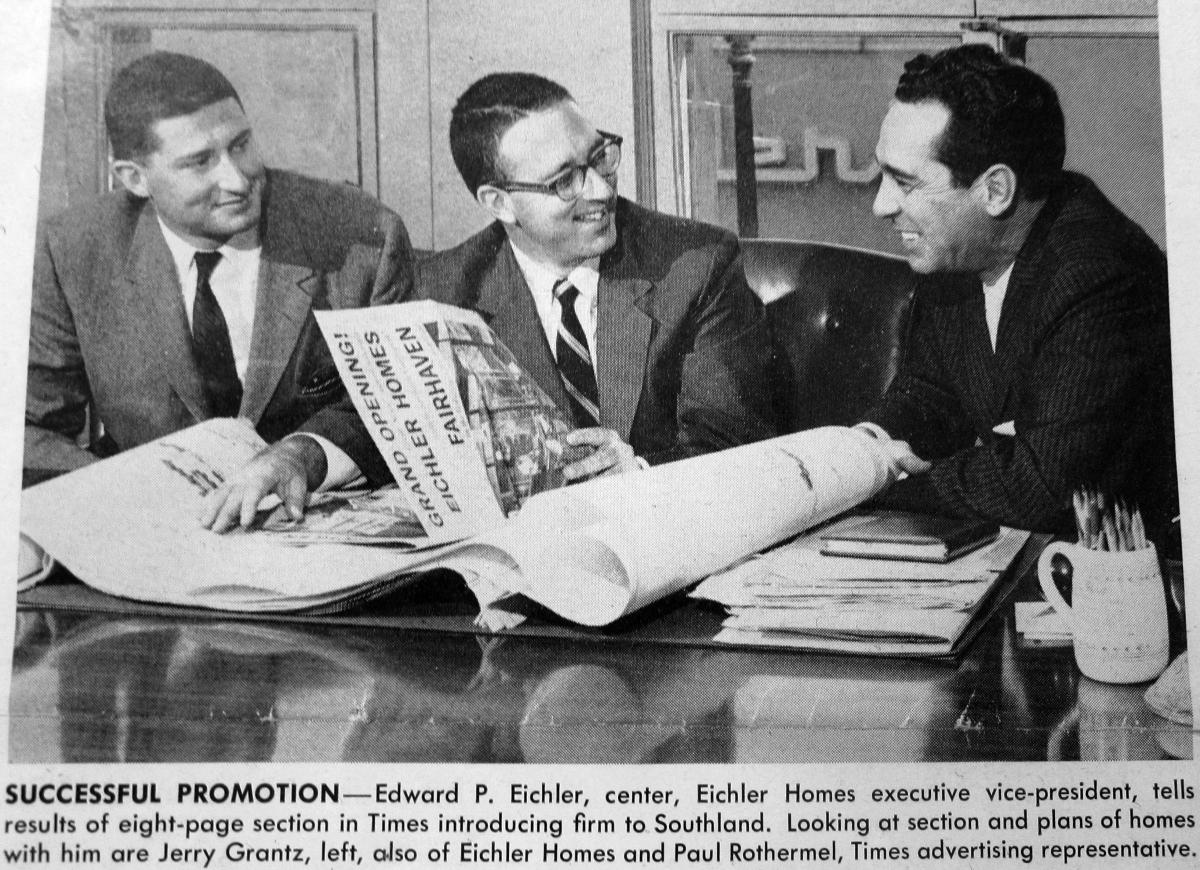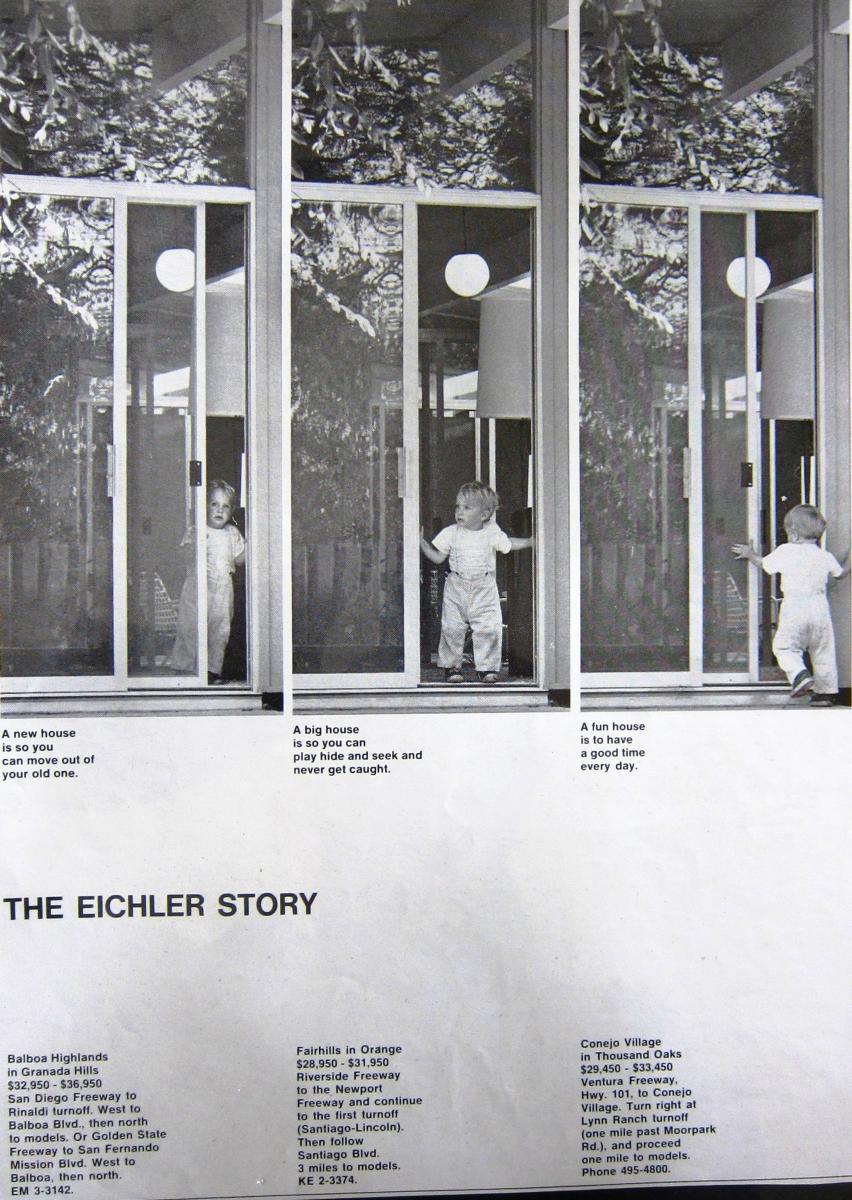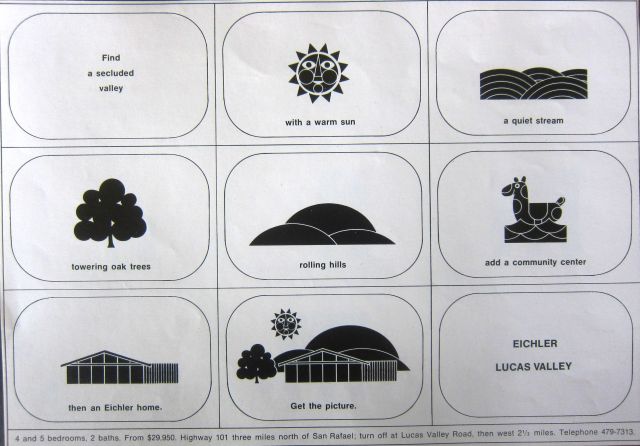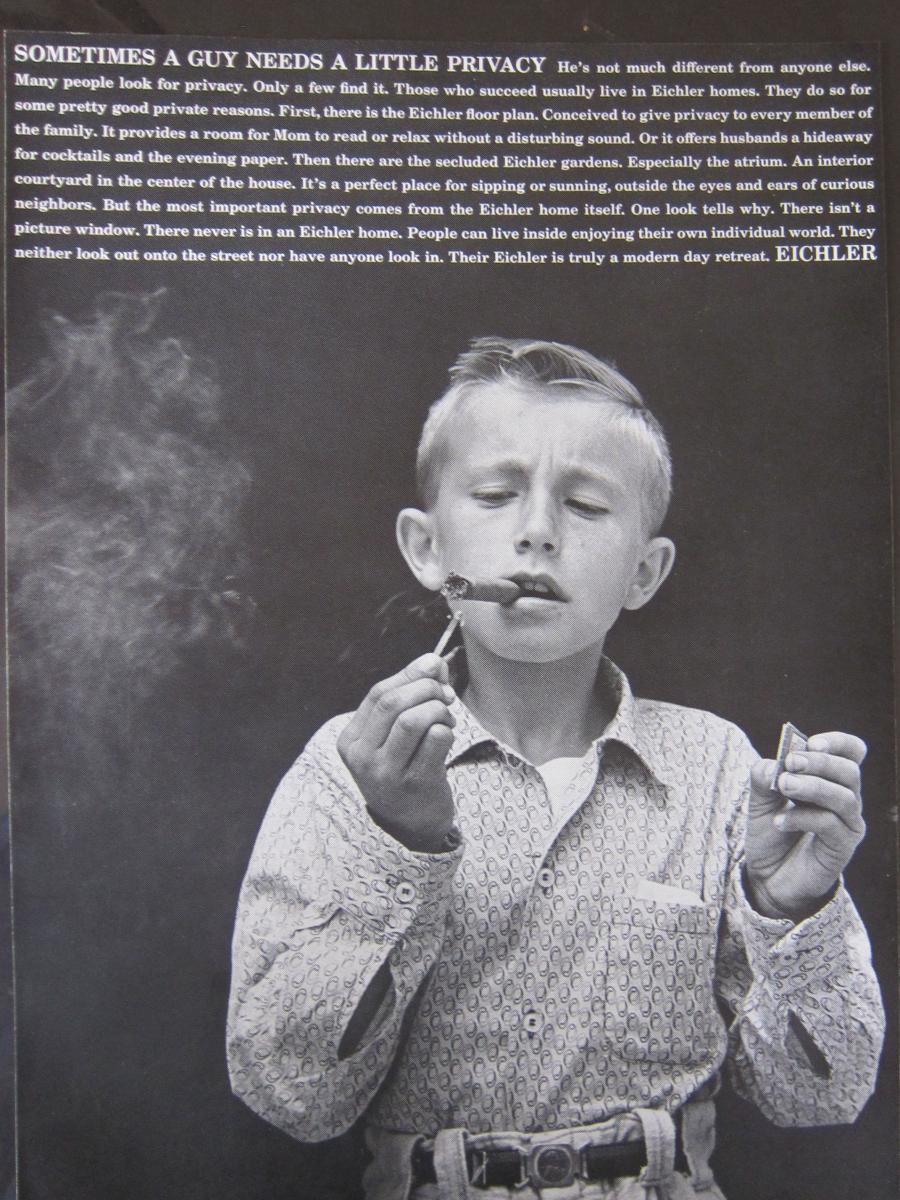
Eichler Advertisements Show a Class Act
 |
|
|
Joe Eichler’s homes were special, Jerry Grantz says, and so the advertising and marketing materials for them had to be special as well. Grantz, who was Eichler Home’s advertising copywriter from 1959 to the mid 1960s, worked with designers, artists, and photographers to create some of the most dynamic ads for new homes of their time.
Or, perhaps, any time.
Jerry discussed how he got started with Eichler Homes, and how the creative advertising campaign flourished in an earlier post. But more can be said about the variety of materials that he helped produce – many of them aimed at solving particular problems.
He says that while brochures for each subdivision were similar in style and look, each had to be changed for local markets. The same can be said of the ads he helped turn out for local newspapers. It was hard work.”
“We had a new ad every week because there were so many subdivisions. I think we were at 15 subdivisions at one time,” says Jerry, who is 82 and lives near Lake Merced in San Francisco. “When [the subdivisions] in Los Angeles opened. we were going from up north, in Marin, to LA.”
“We were producing everything. We had to get printers to do this stuff, after the guy designs it and we agree on it. There was a whole operation.”
 |
|
|
When Eichler opened his tracts in the city of Orange, to understand the local market and reach out to it, they brought in a woman who had done marketing for another major institution in the neighborhood – Disneyland.
One of the challenges in marketing Eichler homes, Jerry says, was how different they looked as compared to traditional ranches of the period, all of which had picture windows. “Front windows,” Jerry says. “You have to have that window in that living room. When Eichler turned his back on that, people said, ‘What the hell is all that?’”
Jerry and his team’s attempt to appeal to the 25 percent of the public that might be receptive to modern homes involved relatively abstract ads at first – ads that did not show homes but suggested other reasons why Eichler homes might appeal.
One, which starts with the words “Sweet Decision,” showed a towed hair boy staring longingly into the window of a candy shop. It’s an eye-catching shot, though it has nothing to do with homes. And the copy, while it verges on free association, has proved prescient.
 |
|
|
“It’s fun to buy something you like. It’s easy to sell something others enjoy to buy or sell. You’re better off with an Eichler home. As a buyer you gain much. Eichler experience, architectural know-how, savings because of large purchasing power. As a seller you obtain more. It’s easy to understand why. An Eichler home never dates itself.
“The design of a ten-year-old Eichler is, today, ten years ahead of its time. And few other homes age so well. No wonder Eichler homes appreciate. In fact, as much as 40 percent. It may be a good way to become wealthy. Buy and sell Eichlers. And think of all the fun you’d have.”
This was part of a very successful series of ads that blended one oddball photo, to draw in people’s attention, with creative copy to drive the point home. After a bit, though, the series was replaced. The ads were aimed at intellectuals – but maybe they had gotten too intellectual.
“After a year people would say things like, ‘You know, those Eichlers are really neat ads, but they are kind of cold,’” Jerry says. “I said, ‘You know, I think that’s right. They’re too straight. There’s not enough richness. There’s something that’s not there.”
“What you mean by cold,” Jerry explains, is “they become too design-y, they become too flat, there’s not a human kind of touch to it. It’s too subtle, you can say, in some ways.”
One later ad, designed to be warmer in tone, still failed to show an entire Eichler house – though it shows part of the house, the sliding glass.
 |
|
|
Three shots are shown of a child entering and exiting. Among the copy, “A big house is so you can play 'hide and seek' and never get caught,” and “A fun house is to have a good time every day.”
One of Jerry’s favorite pieces for Eichler was designed by G. Dean Smith, a very talented and now famous designer. It combined several different ads and folded out like a flower. It was designed for the would-be buyer to take home while mulling over a possible home purchase.
Each 'petal' of the flower focuses in an abstract way on a positive feature of Eichlers, from workmanship to cleanliness to planned living space to flexibility. Jerry still marvels at the design.
“I don’t think you can avoid using the word ‘class’ here,” he says. “You’re not dealing with a normal home seller.”
“That’s the fun of it.”
During his tenure at Eichler Homes, Jerry had no feedback from Joe Eichler on his ads or other marketing materials – not even when they won awards from prestigious organizations, like the Art Directors and Artists Club of San Francisco.
Then Jerry concocted this one.
 |
|
|
“Sometimes a guy needs a little privacy, the ad began. “He’s not much different from anyone else. Many people look for privacy. Only a few find it. Those who succeed usually live in Eichler homes.” The copy went on, with reference to offering “husbands a hideaway for cocktails and the evening paper.”
But it’s unlikely Joe read that far because the image filling the page showed a young boy smoking a cigar.
Now, Joe smoked cigars. But young boys did not, or should not.
The reaction at Eichler Homes combined astonishment and rage. "It was the only ad they pulled off the market,” Jerry says.
“Oh! The ad was used. But it was only used once.”
- ‹ previous
- 162 of 677
- next ›



